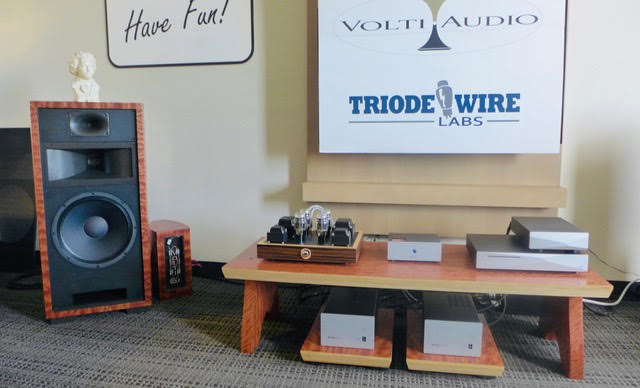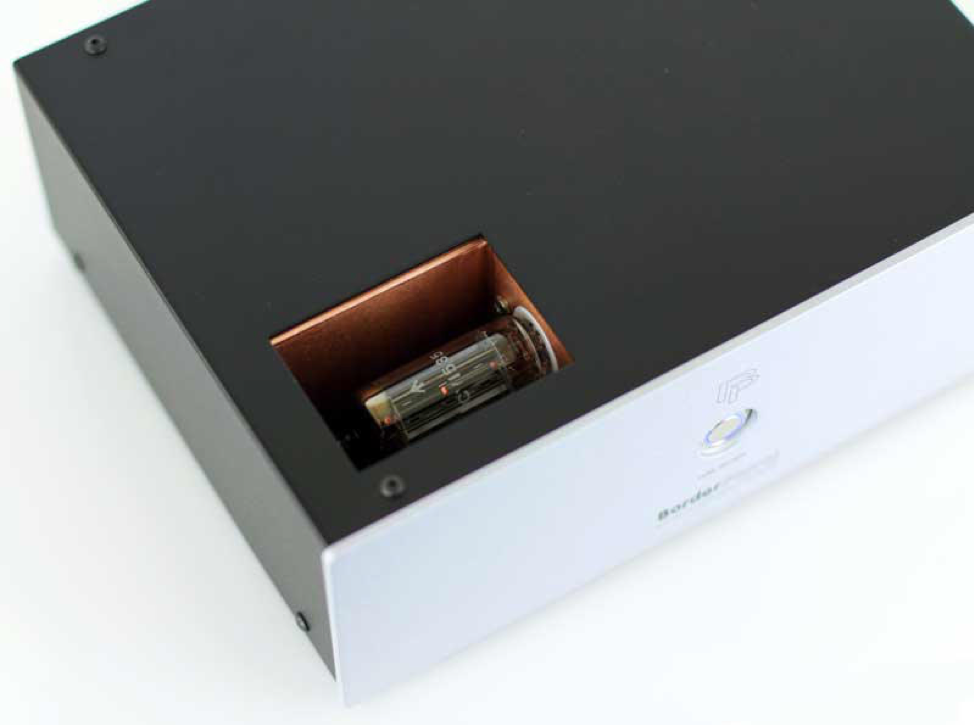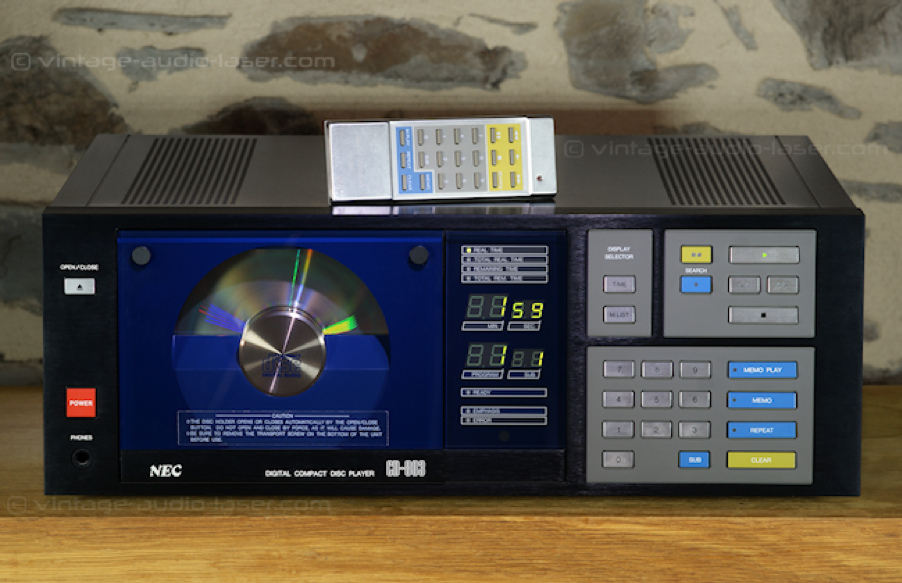What happens when you combine a power supply design from the 1930s with a digital chip designed in the early 1990s to make a DAC in 2020? That’s the question I wanted to explore with the BorderPatrol DAC SE-i.
BorderPatrol Audio Electronics is based out of Maryland and headed up by Gary Dews, owner and designer. Gary began his audio career in Brighton, in the UK selling Audio Innovations tube amplifiers. In fact, Gary started BorderPatrol in 1993 while he was still in the UK (notice the irony since the UK does not have a border patrol). He moved to Maryland in 2005.
BorderPatrol has always focused on tube electronics and paid particular attention to how the power supply contributes to the overall sound of the component. It is no surprise that the Border Patrol DAC has a tube in it.
Looking Back to the Florida Audiofest
Who knew back in February that the Florida Audiofest would be the only show that would go on as planned in 2020? At the show, Jack mentioned that he was quite enamored with the BorderPatrol DAC and that I should give it a listen if I had a chance.

As luck would have it, we were invited to an after-hours listening session in the Volti, BorderPatrol, Triode Labs Wire, and Innous room (reviewed here). As I mentioned in an earlier review of the Triode Wire Labs cables, I was very impressed with the sound that evening, and at the end of the listening session, I asked Gary if I could contact him for a review sample. Fast forward to April and a BorderPatrol DAC SE-i arrived for me to audition.
SE-i Specs
Readers of our website will recall a previous review of the BorderPatrol DAC SE by Jack a while back. Jack does an excellent job covering the design of the BorderPatrol DAC. Rather than rewrite it, I would refer you to his article for the technical aspects of the unit and his thoughts on the sound quality. Instead of a full-blown “top to bottom” review, this review is more of a second opinion.
But for those of you who used Cliff Notes in high school, the highlights of the circuit are:
- The use of a vintage Phillips TDA 1543 R-2R chip that is non-oversampling (NOS)
- 16-bit good up to 96k
- No digital filtering, output buffering, or up-sampling
- Choke input power supply
- Tube rectification in the power supply (switchable)
- Copper chassis
The newer “i” designation indicates the use of Jupiter Beeswax Cryo Film and foil output coupling caps. Gary tells me if you own a SE version you can have it updated to the SE-i version for $295.00. This includes return shipping in the USA.
My Digital History
Before we go much further, I’ll give just a bit of background on where I am in the digital world. I think it is important to share my biases and that I am no stranger to vintage digital chips.
Over the years, I have sorted through a plethora of digital devices starting in 1982 with one of the first CD players to enter the country, the NEC CD803e. I worked for one of the largest NEC dealers in the US at the time, and we got one of the first 10 in the country. It was quite a coup for little old Baton Rouge, La.
The NEC’s sound was disturbingly fatiguing after about 10 minutes of listening, and the Oracle, Thorens, and Philips turntables we sold at the time handily bested it sonically.
An even bigger coup was the time I flew to Atlanta to get one of the first Magnavox Laser Vision players in the country. We actually bought the player a ticket for the return flight, and I buckled it up in the seat next to me. There was no way we would dare risk shipping it nor have the airline rough it up as cargo.
The TDA-1541a Chip
The Meridian Pro was the first CD player to turn my head, and it was followed by the Phillips CD960 with a TDA-1541a DAC chip. It was the first player I could listen to for more than 30 minutes. We sold a lot of those. To this day I still have a TDA-1541a “double crown” chip-based player in my fold in the form of a highly modified McCormack Signature CD Player. While it is not the last word in resolution, it treats the music right and it still plays on an almost daily basis in my secondary system.
Since the time I first heard the TDA-1541a chip, I have tried all kinds of DACs in the last 25 plus years. The list is too long to mention, but trust me, it includes most of the names you are familiar with.
Delta/Sigma Designs
Frankly, the vast majority of Delta/Sigma designs have excellent resolution, but they also have one unforgivable quality I call “digital tension”. While the resolving ability of the Delta/Sigma DAC is initially attractive, after about 30 minutes of listening I am looking for the ripcord to parachute out of the listening session. Improvements have definitely been made over the last few years with some software-driven DACs from the likes of Chord and PS Audio. My musical heart, however, still yearns for the sound I get from an R-2R multi-bit chip.
My primary system currently includes an Esoteric X-03se that uses one of the last multi-bit DAC chips made, the ubiquitous Burr Brown 1704. However, I usually use the Esoteric solely as a transport into a highly customized multi-bit DAC with transformer-coupled outputs that I have built. So, now you know my biases.
Evaluation
My own listening and evaluation confirmed the old statement, “If it sounds good and measures poorly, we are simply measuring the wrong thing.” Better yet, what we are measuring does not correlate to sound quality.
Although trying a DAC with technology that is shall I say not the latest and greatest wasn’t a stretch for me. The earlier reviews that complimented the sound, however, intrigued me. The real icing on the cake was when it did not measure well in a now-famous review by a popular print magazine.
The tube in this DAC is used in parallel with the solid-state rectification and not used in the output stage, like virtually all other tubed DACs. A button on the front panel of the unit allows you to switch its impact on the sound on or off.
It’s All About the Music
With the tube switched in the circuit, the BorderPatrol DAC is all about the flow of the music. Unlike the majority of digital converters I have sampled, I seemed to relax when I listen to this unit. I become involved and interested in the music and not the component. I listened longer and deeper into the structure of the music.
There is a coherency and a natural feel to vocals. They seem to be cut from the same cloth and are very familiar sounding. Although I did the majority of my listening with the tube engaged, I nevertheless enjoyed the ability to switch it out depending on the type of music I was listening to or my overall mood.
I would go tubeless if I was in a Uriah Heep or Grand Funk mood, but if Gene Harris was in the tray, the tube was definitely engaged.
What is interesting is that there is no real “tube-like” signature to the sound that you would expect from a valve being in the circuit. What it does add is a density to the instruments that is absent in many of the DACs I have auditioned. This DAC renders instruments with tone and complex harmonics nicely but never slowed or muddied. The sound has a wonderfully open quality to the sound and the performance just unfolds.
Conclusion
The overall presentation reminds me a lot of my TDA 1541a based unit, and that is a good thing as far as I am concerned. Sometimes the “latest and greatest” is not a move forward.
So, what is the answer to my opening question about using “older technology” to make a DAC? Well, in the case of the BorderPatrol DAC SE-i, you get a wonderful-sounding DAC that is very involving and one that doesn’t chase you away from but actually draws you into the music. Frankly, I can’t say that about the vast majority of DACs that are currently offered.
At its price point, and frankly, at a good bit above, I can’t think of another DAC that would provide a more musically involving experience. Highly recommended. Well done Gary.
Price: $1,925.00




Hi Ken, by any chance have you listened to the Neil Audio D100 mk2?
Transformer coupled output…
Cheers!
That is Neko Audio .. Autocorrect:)
Hi John,
Thanks for reading the review. I have not personally heard the Neko Audio D100 MK2 but Jack did review it a few years ago when he was with Dagogo.
Here is a link to that review.. https://www.dagogo.com/neko-audio-d100-mk2-dac-review/
One of my reference DAC’s is a highly modified McCormack DAC 1 where I employed Jensen Transformers for output coupling. I generally like this configuration.